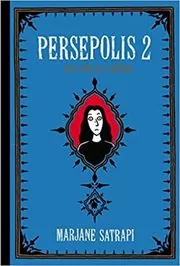The Da Vinci Code Summary
Author: Dan Brown
This page offers our The Da Vinci Code summary (Dan Brown's book). It opens with an overview of the book, and follows with a concise chapter-by-chapter summary.
Drafted with AI assistance and reviewed by a human editor.
As an Amazon Associate, we earn from qualifying purchases (at no extra cost to you).
This book has 2 recommenders!
Overview
Within the heart of the Louvre, a zealous monk named Silas interrogates museum curator Jacques Saunière, seeking the location of the Holy Grail. Saunière deceives Silas about its whereabouts before being fatally shot, leaving him enough time to create a cryptic message in his own blood. Meanwhile, Robert Langdon, a symbology professor and the main character, is called by detective Jerome Collet to interpret the scene, unaware he's under suspicion himself. Silas, deceived by Saunière's misleading information, goes to the Church of Saint-Sulpice only to realize he's been tricked. In a fury, he kills the church's guardian, Sister Sandrine Bieil.
Sophie Neveu, Saunière's granddaughter and a cryptology agent, arrives at the crime scene. She instructs Langdon to call the embassy, leading him to a message warning him of his perilous situation. She reveals to Langdon that they're being tracked by police captain Bezu Fache and successfully diverts the tracker. Sophie and Langdon discover a hidden key behind one of the Louvre's paintings, leading them to a Swiss bank. Inside the bank, they discover a cryptex designed by Da Vinci, an intricate device only unlockable with a password. Despite being pursued by the authorities, bank manager André Vernet aids their escape.
Seeking help to unlock the cryptex, Sophie and Langdon approach historian Sir Leigh Teabing. He unwraps the legend of the Holy Grail, suggesting it is Mary Magdalene's remains and documents proving her royal lineage with Jesus. Their meeting is interrupted by Silas demanding the cryptex. They manage to overpower and capture Silas, before escaping to England via Teabing's private plane. Here, they unravel more cryptex clues leading them to the tomb of Sir Isaac Newton in Westminster Abbey. Teabing reveals himself as the orchestrator of the events, wishing to uncover the secret of the Holy Grail. After a tense standoff, Teabing is apprehended by Fache and the remaining cryptex clue leads Sophie and Langdon to Scotland where she discovers her connection to Mary Magdalene's lineage.
Edited by
Software engineer whose passion for tracking book recommendations from podcasts inspired the creation of MRB.
Lead investor at 3one4 Capital whose startup expertise and love for books helped shaped MRB and its growth.







Comments
Did we miss something? Have feedback?
Help us improve this page by sharing your thoughts